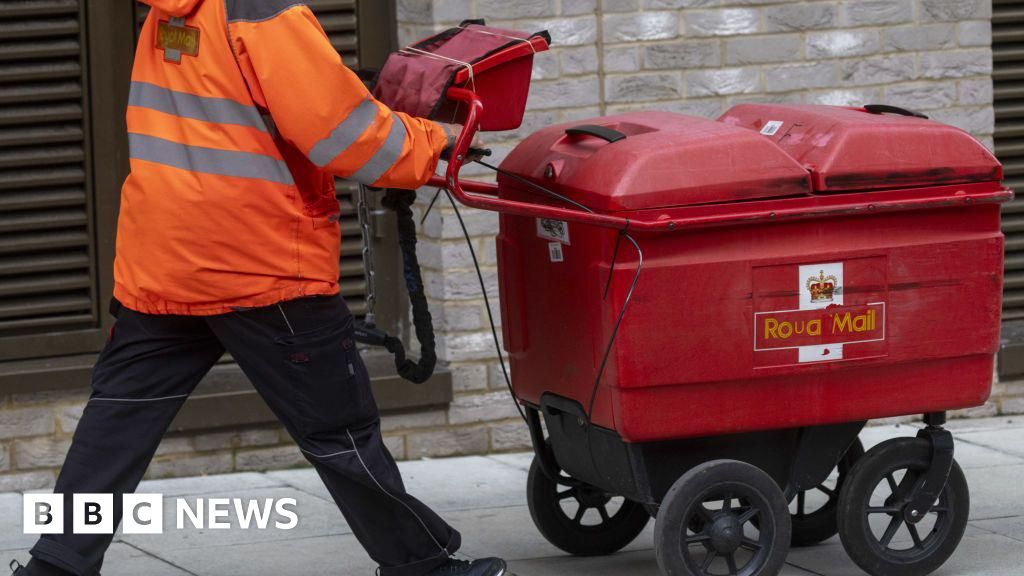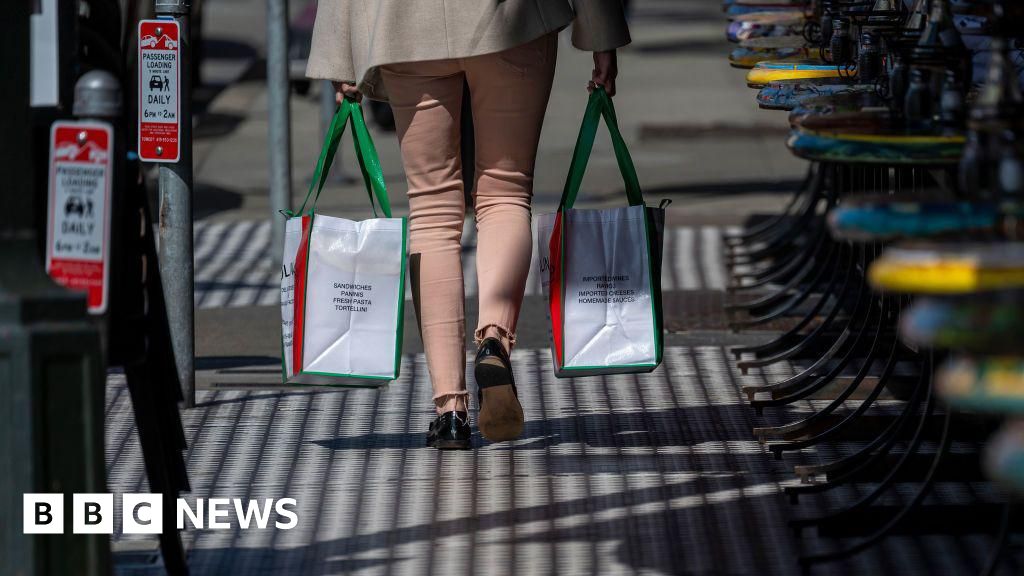ARTICLE AD BOX
By Kevin Peachey
Personal finance correspondent, BBC News
Image source, Getty Images
Official figures are expected to confirm what we all know, or have suspected, from experience in recent weeks - that the cost of living is now rising faster than it has for some time.
Prices are going up at a relatively rapid rate on a variety of items and services. The governor of the Bank of England, Andrew Bailey, has even apologised for the situation. "None of us want to see that happen," he says.
The reasons behind those rising prices can be complicated. Here are five examples that help to explain why we are feeling the pinch:
1. An Uber fare
The cost of getting around is getting more expensive. The popular ride-hailing app recently increased its base fare in London by 10%.
Travellers in the capital who want to get to the airport at peak times are now also facing a 15% surcharge.
Uber says increased demand means it needs more drivers. By raising fares, the firm hopes to attract new drivers, and tempt back those who have gone to work for delivery firms instead.
And of course, the queues outside petrol forecourts are still fresh in the memory for anyone trying to travel.
Image source, Getty Images
Image caption,Petrol prices have been rising since there were queues at forecourts
Motorists with their own petrol or diesel car, can now fill up the tank without a wait, but prices remain high. Motoring group, the RAC says that unleaded petrol hit 146p a litre, and diesel reached 150p a litre in recent days.
"This means, filling up a 55-litre family car with unleaded has now topped £80 for the first time ever," says RAC fuel spokesman Simon Williams.
The high cost of oil and the component parts of the fuel mean drivers will face an "excruciatingly expensive winter", he adds, especially for those on a low income who use their car to travel to work each day.
2. Renovating your home
If you want a compendium of issues that are causing price rises in general, then consider the example of do-it-yourself (DIY) and home improvements.
Image source, Getty Images
Image caption,Prices for some paints have risen by around 10%
The pandemic, global demand, shipping costs, plus a shortage of workers are all reasons why it is now more expensive to put up a garden fence.
The cost of timber has doubled compared to a year ago, owing to all those reasons, so not only fences, but also interior walls, have become pricier.
Covid pushed up the cost of raw materials, and shipping container prices from China saw a more than fourfold rise, says Rico Wojtulewicz, head of housing and planning policy at the National Federation of Builders. That contributed to a 25% rise in the price of materials for renovations.
"Not all materials are immediately available, so anyone having work done is likely to see prices rise again by the time works start. The cost of labour has also gone up by an average of 20%," he adds.
"If you are getting new windows, or doors, the plastic used has gone up by around 13%. Insulation [cost] has gone up by 20% and is going up again next year. Even paint is 10% more expensive than it was in 2020," he says.
3. Savoury snacks
To be specific, we're talking the kind of processed snacks popular among all age groups - Pringles, Doritos, Hula Hoops, and so on.
Prices for these snacks went up by 7.6% in the 12 weeks to the end of October, compared with the same period a year earlier, information from data firm, Kantar shows.
Image source, Getty Images
Image caption,Snacks are not subject to so many price promotions
Prices for canned colas, potato crisps and cat food also all went up by nearly 6%, or more, at the same time, the data show.
Part of the reason is a hangover from the struggles caused by the pandemic.
Fraser McKevitt, head of retail and consumer insight at Kantar, explains that prices are comparatively higher than late summer and autumn last yearbecause there is less discounting in supermarkets. In order to ensure there is stock on the shelves, retailers are cutting promotions.
That also means people are now far less loyal about where they shop.
"As prices increase in certain categories, we can expect shoppers to continue to visit several supermarkets and shop around to find the best deals," he says.
"Already, households visit an average of 3.3 supermarkets per month, in order to find the best value for money."
Food prices in general are rising, but not at the same rate as some other products. However, the latest Kantar figures show they are still going up faster than at anytime since August 2020.
Supermarkets operate in an extremely competitive environment, and analysts suggest they will be keen to keep prices down and retain their customers over the vital Christmas trading period.
4. Your heating bill
As the mercury dips, so the cost of heating our homes rises - and it is going to hit some people very hard in coming months.
The rising cost of gas has been well documented in recent weeks. The cost to suppliers on the wholesale markets soared to unprecedented levels, for reasons which are complex and global.
The effect on your domestic energy bill has been seen in three key ways:
- Firstly, a host of suppliers have gone bust. Their customers have been moved to another supplier, but on a more expensive tariff
- Secondly, many customers of remaining firms have been told that their monthly direct debit demand is going up
- Thirdly, there is protection for customers on variable tariffs, through regulator Ofgem's price cap, but this limit was put up to a new high in October and is likely to rise by hundreds of pounds more in April
Rising domestic energy bills are influential in the forecast for the inflation rate (measuring the rising cost of living as a whole), rising in the coming months, before being expected to drop as the situation eases.
Scott Byrom, chief executive of price comparison website TheEnergyShop, says: "The bubble has not burst yet."
While a warm winter may help some suppliers offer better deals than they would otherwise have expected, everyone should still brace for significant further price rises, he says.
That hit will be felt particularly hard among poorer people, as heating and eating take up a bigger proportion of household income.
5. Second-hand cars
Motoring group, the AA, says that some cars are gaining in value as they sit on the driveway.
Three to five-year-old Ford Fiestas, the most popular on its AA Cars website, are valued at £9,770 compared to £7,448 two years ago.
Image source, Getty Images
Image caption,The car market has various dynamics which intersect to drive price trends
The steepest increase was the price of a three-year-old Mini Hatch, which in 2021 was 57% higher (£15,367) than a model of the same age in 2019 (£9,811).
The trend is so significant to cost of living data in general that it has been regularly highlighted by the official collector of the numbers - the Office for National Statistics.
The main driver (pun intended) for second-hand car prices is pressure on manufacturing new vehicles.
A global shortage of computer chips used in car production, as well as other materials such as copper, aluminium and cobalt, has led to fewer new vehicles rolling off production lines.
That has meant more buyers turning to the used-car market. Rising demand means rising prices.

 3 years ago
105
3 years ago
105








 English (US) ·
English (US) ·